Living off grid offers numerous advantages, from reducing your carbon footprint to enhancing energy security. A pivotal consideration, especially in colder climates, is selecting the right off-grid heating options.
This guide explores various methods to ensure your living space remains warm even during the coldest winter months.
Maximizing Home Efficiency: The First Step
Before delving into off-grid heating methods, the first thing to address is your home’s energy efficiency. This is particularly important in colder climates and during winter months.
Enhancing your home’s energy efficiency is not just about saving money; it’s about maximizing the effectiveness of your heating system, reducing energy consumption, and minimizing your carbon footprint.
1. Insulation is key: Proper insulation is one of the best ways to prevent heat loss. This goes beyond just filling in the gaps. You need to consider insulating walls, floors, and especially the roof, as a significant amount of heat is lost here.
Using materials like fiberglass, foam boards, or natural fibers can help keep the heat inside. Upgrading insulation to higher R-values can provide substantial benefits for those in extremely cold temperatures.
2. Upgrade windows and doors: Windows and doors are common culprits for heat escape. Double or triple-glazed windows can significantly reduce heat loss, as can well-sealed and insulated doors. If replacing windows and doors isn’t feasible, weather-stripping and thermal curtains can be excellent alternatives.
3. Seal and draft-proof: Check for drafts around your home and seal them. This includes gaps around door frames, windows, and even electrical outlets. Simple solutions like caulking or weather-stripping can make a big difference. Remember, even small leaks can lead to significant heat loss over time.
4. Enhance thermal mass: Incorporating materials with high thermal mass, like stone or brick, can help stabilize indoor temperatures. These materials absorb heat during the day and release it slowly, reducing the burden on your heating system during colder nights. For example, bricks or stones surrounding a wood stove will retain heat and slowly release it for hours.
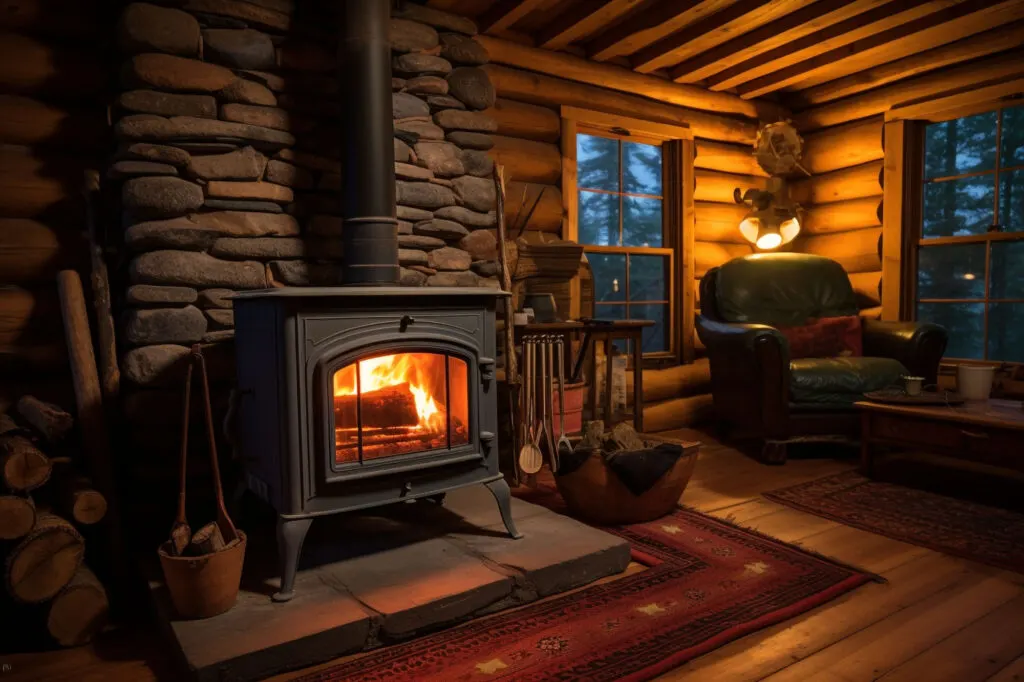
5. Smart thermostats and heating controls: Installing a smart thermostat or heating controls can optimize energy usage. These devices allow you to set schedules, monitor your energy consumption, and adjust temperatures for different rooms, ensuring you’re not heating unused spaces.
6. Consider underfloor heating: In some cases, underfloor heating can be an efficient method to heat a home. It distributes heat more evenly and can be more energy-efficient than traditional radiators, especially when combined with renewable energy sources like solar power.
7. Water heating efficiency: Don’t overlook the efficiency of your water heater. Insulating your water pipes and storage tank can reduce heat loss, ensuring your system doesn’t work overtime. Solar water heaters or on-demand (tankless) water heaters can also be more efficient alternatives to traditional models.
8. Regular maintenance: Finally, regular maintenance of your heating system and home structure is vital. This includes cleaning vents, servicing your heating units, and ensuring all components are functioning efficiently. A well-maintained system not only reduces energy consumption but also prolongs the life of your heating equipment.
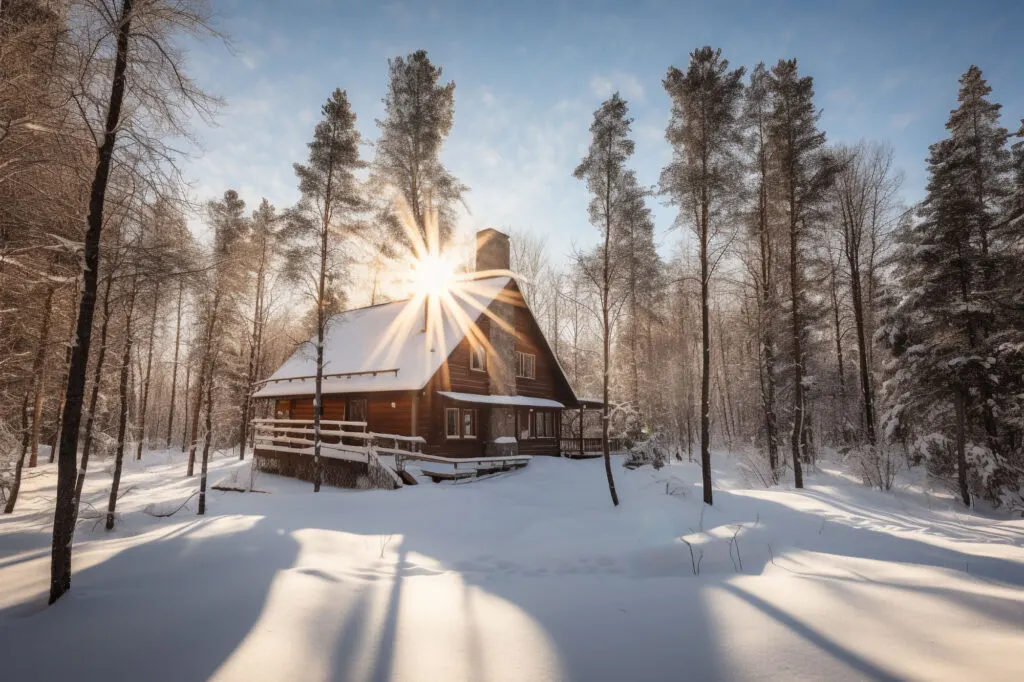
The Best Off-Grid Heating Options
Now that we’ve discussed maximizing home efficiency and reducing heat loss, it’s time to delve into the good off-grid heating options available. Each option has its own set of advantages and considerations, especially when it comes to how they work and their fuel requirements.
1. Wood-burning stoves
A classic choice for off-grid heating, wood-burning stoves are known for their efficiency and the cozy ambiance they provide. They operate by burning firewood, which can be sourced locally or purchased.
If you have access to a wooded area, you may be able to harvest your own firewood, ensuring a sustainable and cost-effective fuel supply. A decent-sized wooded property usually has enough fallen or dead trees to avoid cutting down trees for years.
If you don’t have wood on your property but live near forest land, you can buy permits in most areas to harvest your firewood. Cutting and storing a 12-month or longer wood supply is very feasible.
When buying or cutting firewood, it’s important to consider the wood type; hardwoods like oak and maple burn longer and hotter than softwoods like pine.
Regular maintenance, such as cleaning the flue and ash removal, is essential for wood stove safety and efficiency.
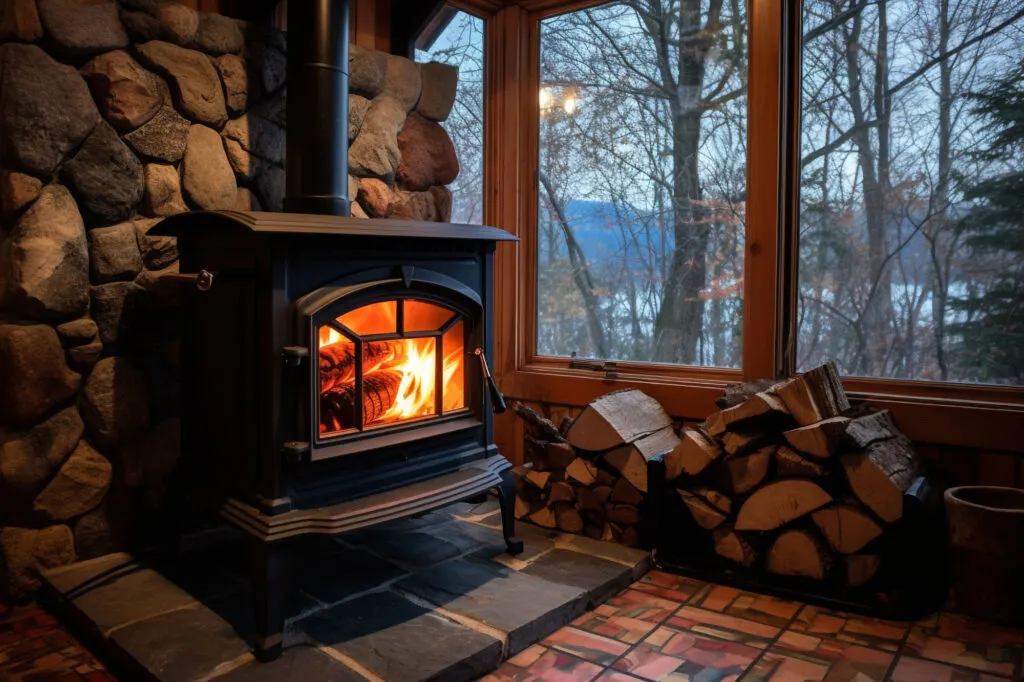
2. Pellet stoves
Pellet stoves are a more modern heating solution, burning small, compressed pellets made from wood shavings or sawdust. These stoves are known for their convenience and efficiency.
The pellets are typically purchased in bags and fed into the stove automatically from a hopper, making them easier to manage than traditional wood stoves. They produce less ash and are considered more environmentally friendly due to the pellets’ composition. However, they do require a steady supply of pellets and some electricity to operate the automatic feeder and controls.
Those living off grid and in rural areas need to buy and store enough wood pellets to last until their next trip to town, if not through winter.
3. Propane heaters
Propane heaters are a versatile option for off grid heating. They burn propane gas, which must be purchased and stored in tanks. Propane is known for its high energy efficiency and can be used for space and water heating.
These systems often come with thermostats for easy temperature control. However, the need to regularly purchase and transport propane should be considered, especially in remote locations.
4. Oil boilers
Oil boilers are another option for heating, especially in areas where oil is readily available. These systems burn heating oil to produce heat, requiring a tank for oil storage.
Oil boilers are efficient and can heat large spaces, but like propane, they rely on a consistent supply of fuel, which can be subject to price fluctuations.
5. Active solar heating
Active solar heating systems use solar panels to collect solar energy, which is then used to heat water or air for home heating. These systems often include a battery storage system to retain heat for use during non-sunny periods.
Active solar heating is a great option for regions with ample sunlight, but the initial setup cost and the need for a backup heating system on cloudy days are factors to consider.
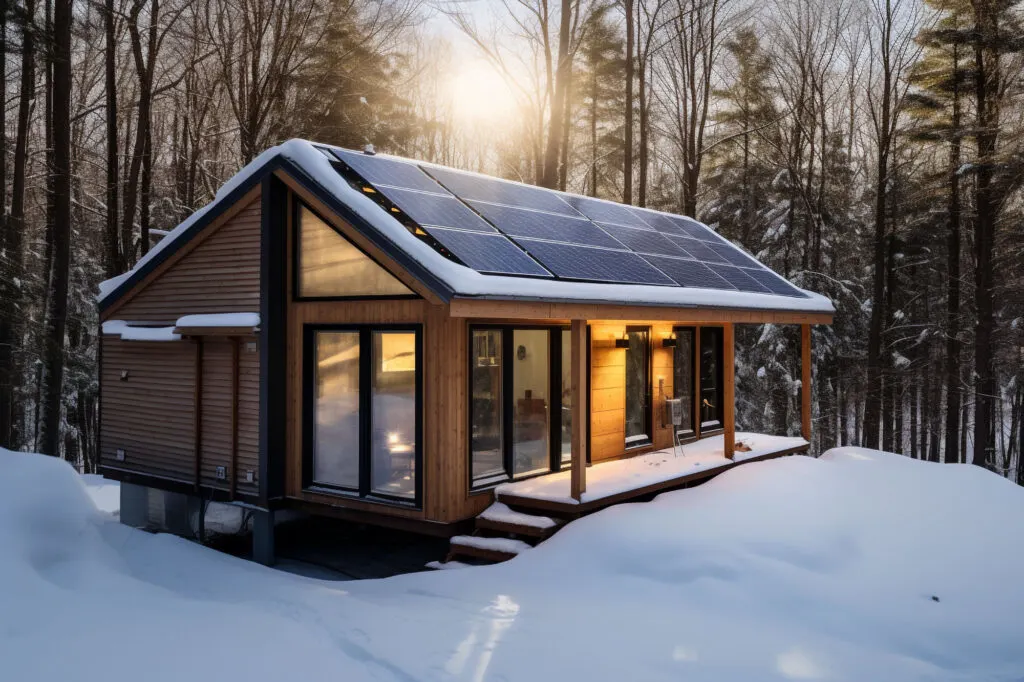
6. Passive solar heating
Passive solar heating takes advantage of the sun’s energy without mechanical systems. This method relies on strategically placed windows, heat-absorbing surfaces like stone or concrete, and thoughtful home design to capture and distribute heat.
While it’s a cost-effective and low-maintenance option, its effectiveness is highly dependent on the home’s design and orientation.
7. Electric and portable heaters
In an off-grid scenario, electric and portable heaters can be used as supplementary heat sources, particularly if you have access to renewable electricity sources like solar or wind power.
These heaters are versatile and can be moved to specific areas as needed. However, their use as a primary heat source in an off-grid setting is limited by the availability and capacity of your power system.
8. Geothermal heat pumps
Geothermal heat pumps (GHPs) are an incredibly efficient heating (and cooling) system for off-grid homes, well-suited for many areas. They work by tapping into the relatively stable temperatures underground, where the soil is warmer in winter and cooler in summer than on the surface.
A series of pipes, known as a ground loop, is buried underground and filled with fluid – usually a mixture of water and antifreeze. This fluid circulates through the loop, absorbing heat from the ground during winter and transferring it indoors. In summer, the process is reversed for cooling.
While geothermal systems are highly efficient and have low operating costs, they do require electricity to run the heat pump and circulatory system. For off-grid applications, this means having a reliable renewable energy source or a hybrid system with a generator backup.
9. Air source heat pumps
Air source heat pumps (ASHPs) are another efficient heating option, working similarly to geothermal pumps but extracting heat from the air outside instead of the ground. They use a refrigerant system that absorbs heat from the outside air and compresses it to increase its temperature. This heat is then transferred inside the home.
ASHPs can function even in cold climates, although their efficiency decreases as the temperature drops. They are less costly to install compared to geothermal systems but also require electricity to operate. In an off-grid setting, pairing ASHPs with a solar panel system or other renewable energy sources is essential to maintain a sustainable and autonomous heating solution.
10. Solar thermal panels
Solar thermal panels, also known as solar water heaters, are different from photovoltaic (PV) panels used for generating electricity. They capture the sun’s energy directly to heat water or a heat-transfer fluid in the panels.
This heated fluid is then used to provide hot water to a home and can also be integrated into home heating systems. For instance, the heated water can be used in radiant floor heating or through hydronic radiators, providing efficient space heating.
11. Solar air heaters
Solar air heaters are a simple yet effective way to harness the sun’s energy for heating purposes. These systems consist of a collector panel, often mounted on an exterior wall or roof, which absorbs solar radiation. Air circulates through the collector, gets warmed by the absorbed solar energy, and is then distributed into the home.
Building a solar air heater can be a rewarding DIY project, like this heater made with aluminum cans. Materials like cans, black paint, and clear polycarbonate or glass can be used to create effective collectors.
While solar air heaters may not be sufficient as the sole heating source in colder climates, they can be a good option for supplemental heating. They can reduce the reliance on primary heating systems, particularly on sunny days, and help lower overall heating costs.
Combining Methods for Optimal Efficiency
When it comes to heating homes off the grid, relying on a single method may not always be the most efficient or reliable approach, especially considering varying weather conditions and energy needs.
Combining different heating methods can increase efficiency, sustainability, and resilience. Here’s how you can strategically integrate multiple heating options for optimal performance:
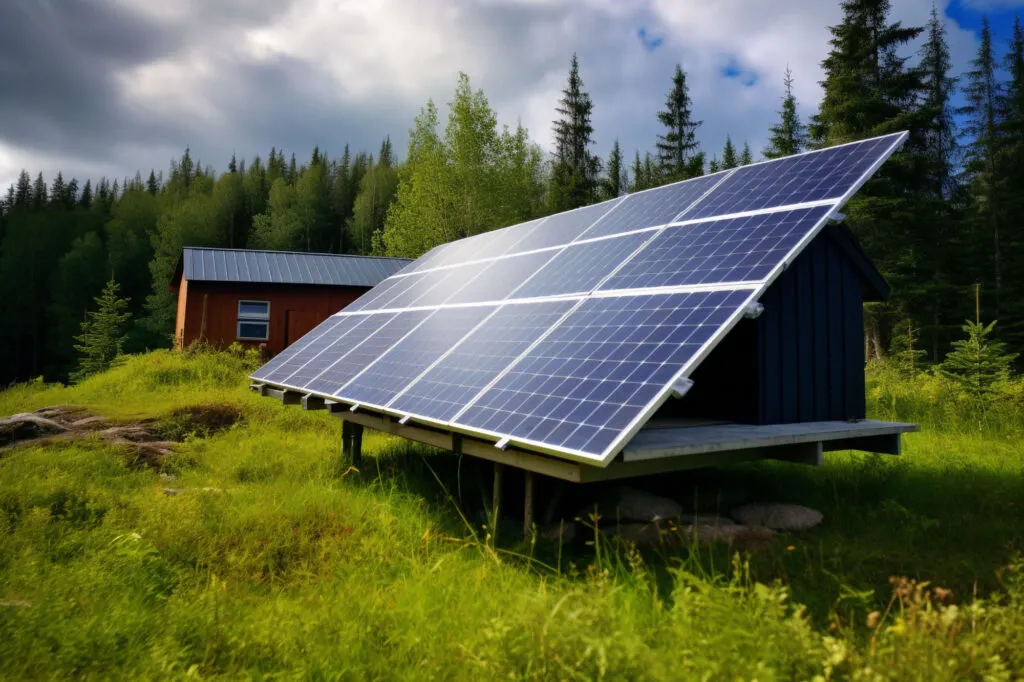
Leveraging solar power with traditional heating: Pairing solar thermal panels or active solar heating with traditional wood-burning or pellet stoves can be an excellent strategy. Solar panels can provide primary heat during sunny days, reducing reliance on wood or pellets, which can then be used as a reliable backup on cloudy days or during the night.
Heat pumps as primary systems with wood stoves as backups: In milder climates, an air source heat pump can serve as the primary heating system, efficiently maintaining comfortable temperatures. For colder spells or during electricity outages, a wood stove can provide an effective backup, ensuring warmth without the need for power.
Hybrid propane or oil systems with renewable energy: Propane heaters or oil boilers can be integrated with renewable energy sources like solar or wind. While the renewable systems can provide baseline heating and energy needs, the propane or oil system can kick in during periods of low renewable energy generation, offering a balance between sustainability and reliability.
Utilizing geothermal with supplementary electric heaters: In homes equipped with geothermal heat pumps, portable electric heaters or electric space heaters can be used in specific areas that require additional warmth, such as rarely used rooms or annexes. This allows for focused heating without overburdening the geothermal system.
Smart integration and automation: Utilizing smart home technologies can optimize the use of multiple heating systems. Automated controls can switch between different heat sources based on efficiency, fuel availability, or energy costs, ensuring the most effective heating method is used at any given time.
Seasonal adjustments: In areas with distinct seasonal changes, homeowners can switch between systems to match the conditions – for instance, relying more on solar heating during sunny seasons and switching to biomass or wood heating during overcast, colder periods.
Complementary use of passive and active systems: Combining passive solar design with active heating systems can significantly reduce overall energy consumption. Passive solar design maintains baseline warmth, reducing the load on active systems like heat pumps or stoves.
Biomass and solar thermal for water heating: Using biomass boilers in conjunction with solar thermal panels can provide a steady supply of hot water throughout the year, with solar panels covering the demand during sunny periods and biomass stepping in during less sunny days.
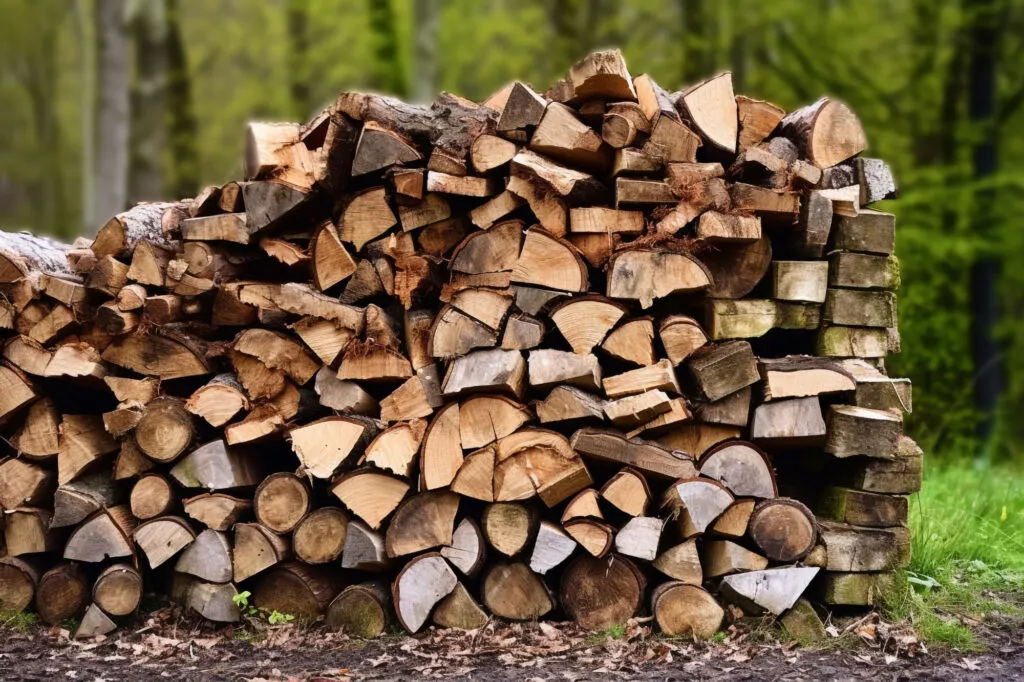
Final Thoughts
Living off grid doesn’t mean sacrificing comfort in bad weather. With a variety of options available, from radiant floor heating to central heating systems powered by renewable energy sources, achieving efficient and sustainable heating is more accessible than ever.
Remember, the key to successful off-grid heating lies in understanding your energy needs, the local climate, and available resources.
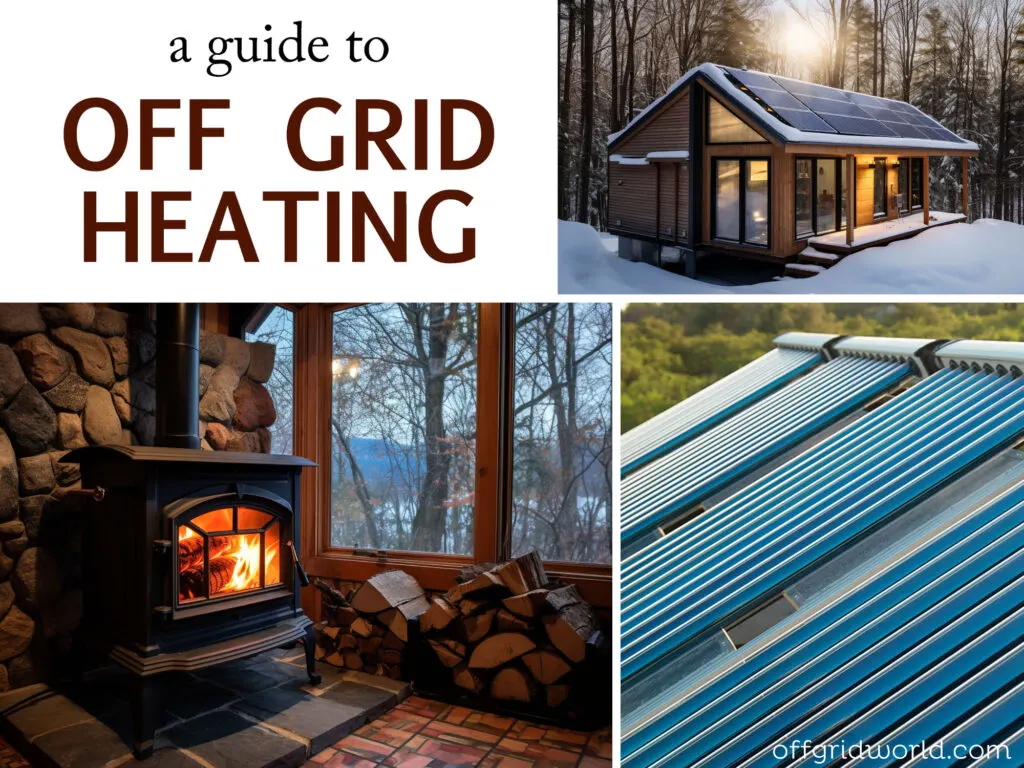

DeniMo
Saturday 4th of January 2020
Oak and elk? I can see elm, but I wouldn’t want to burn an elk.
Off Grid World
Tuesday 7th of January 2020
Haha! Thanks for catching that typo. ;)